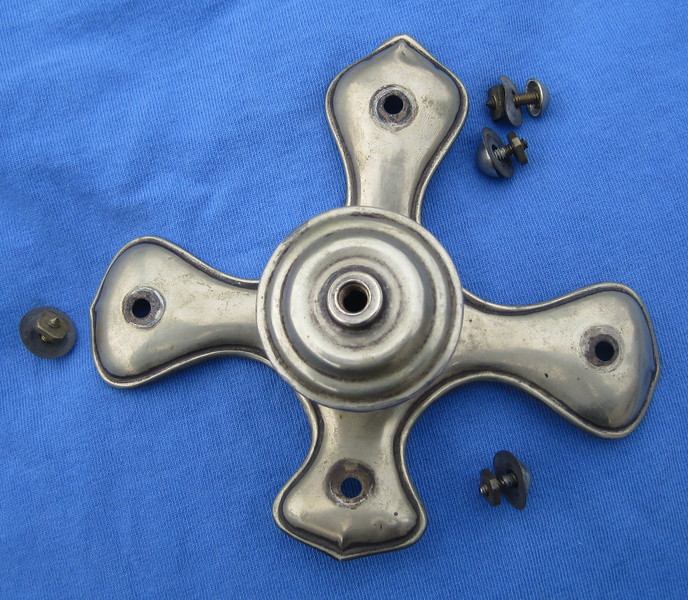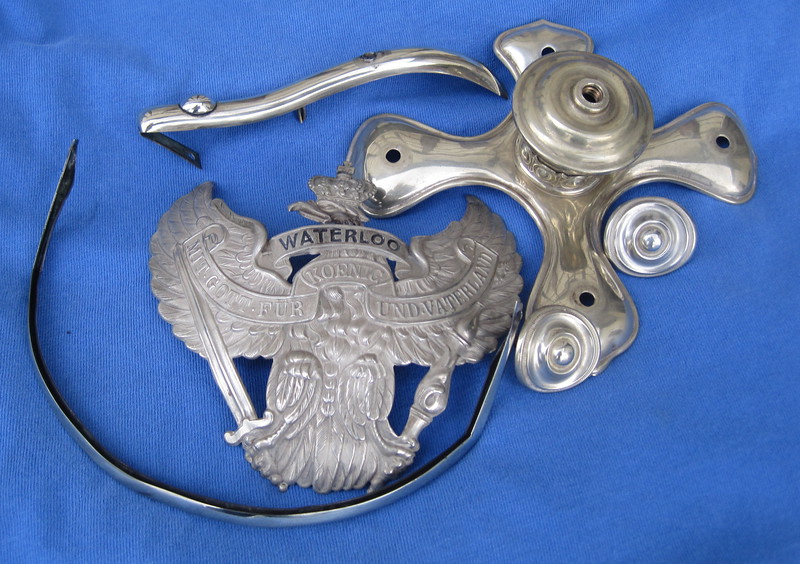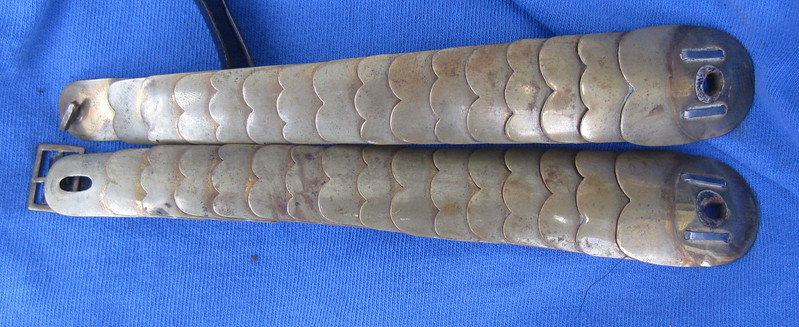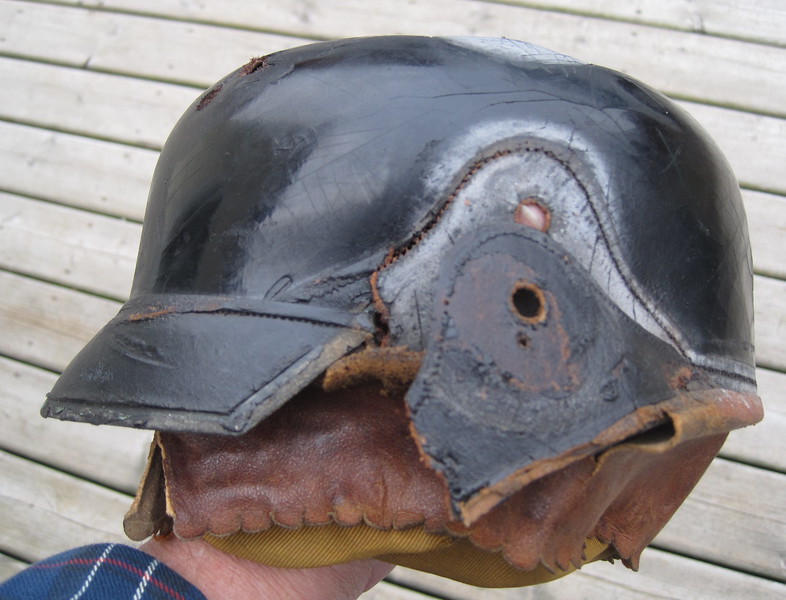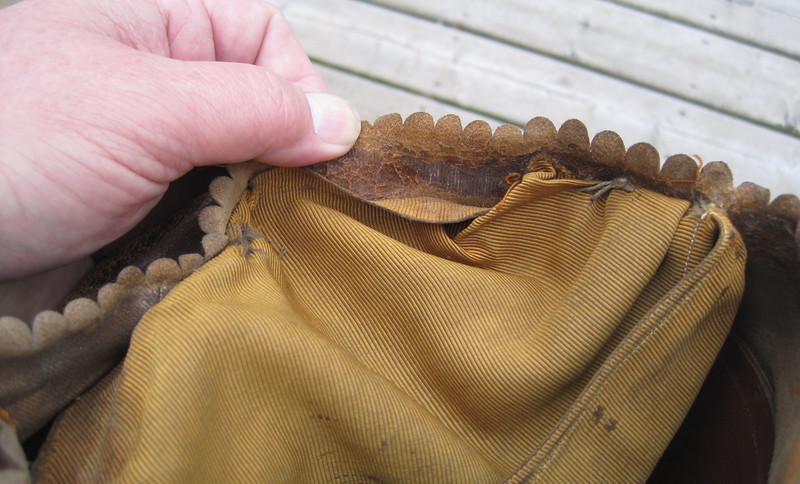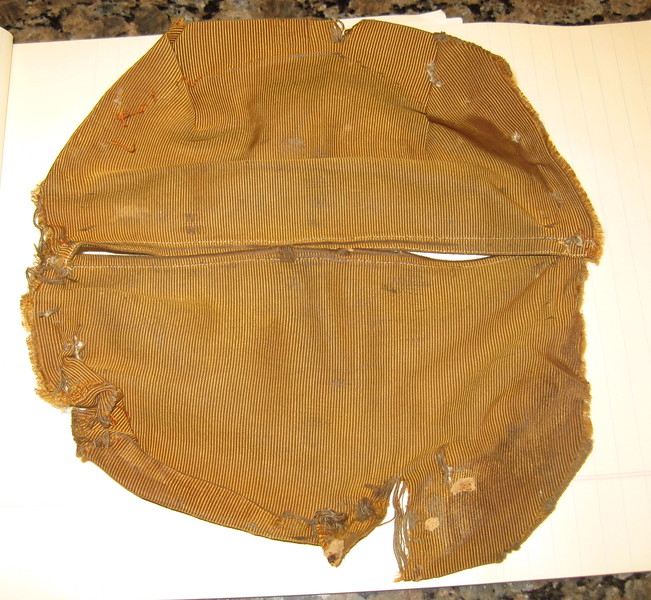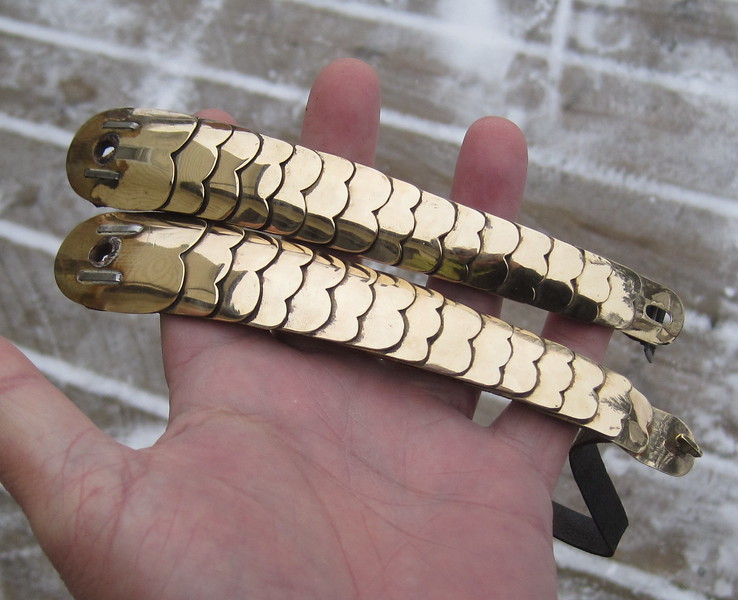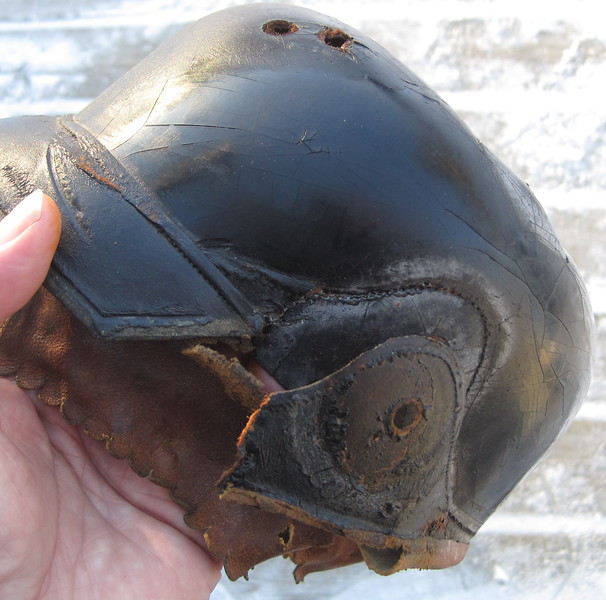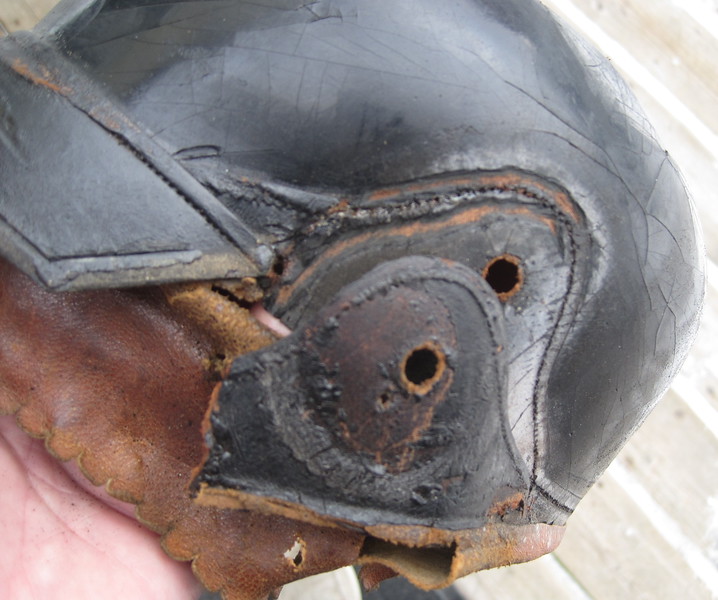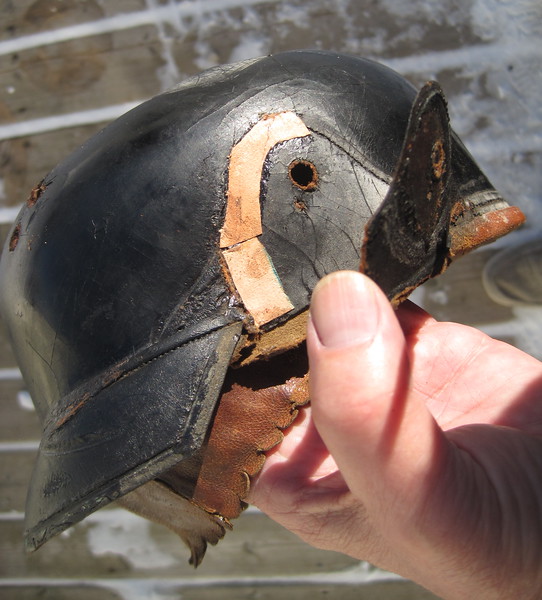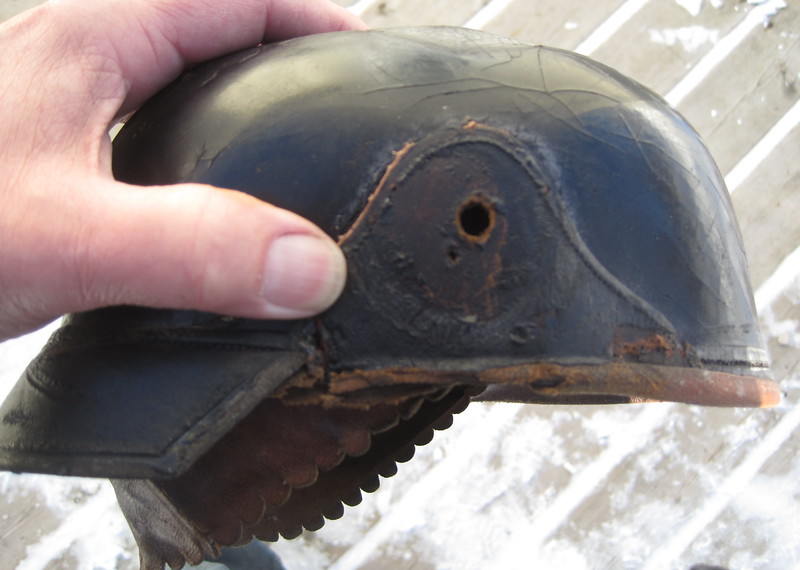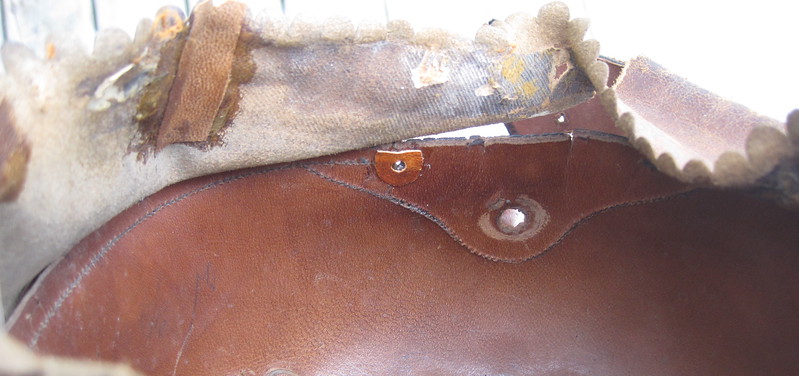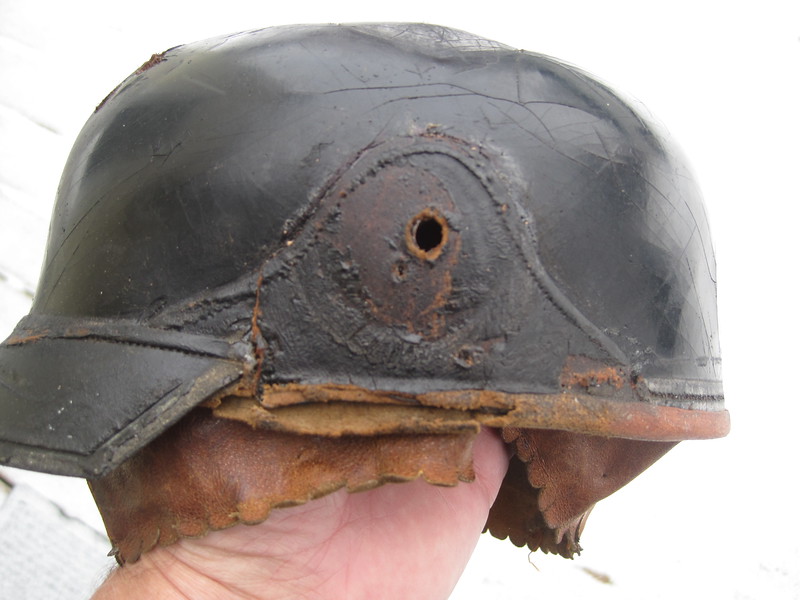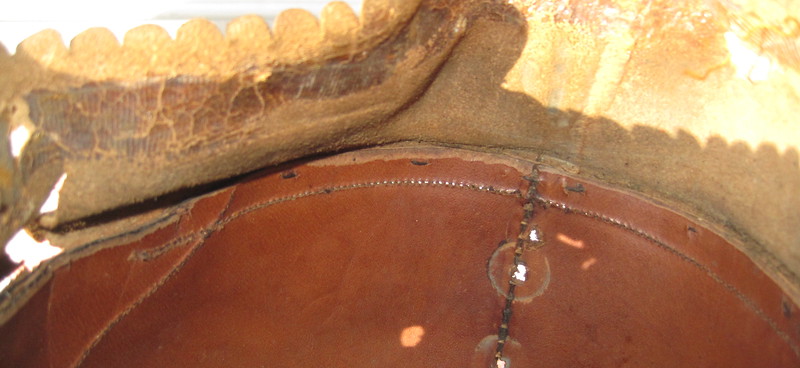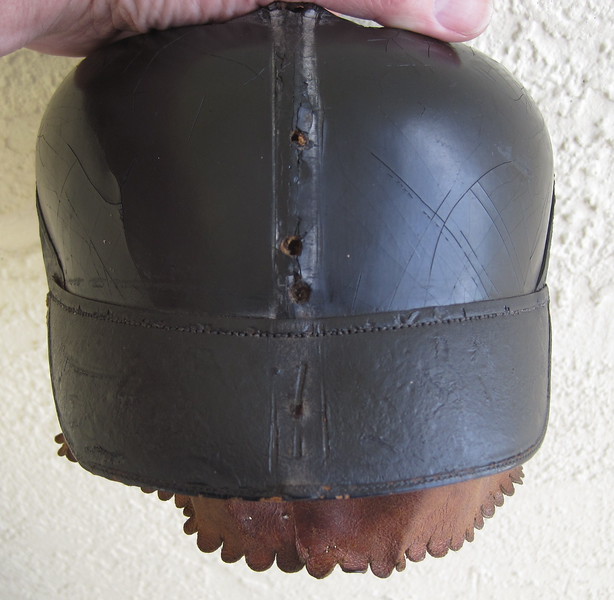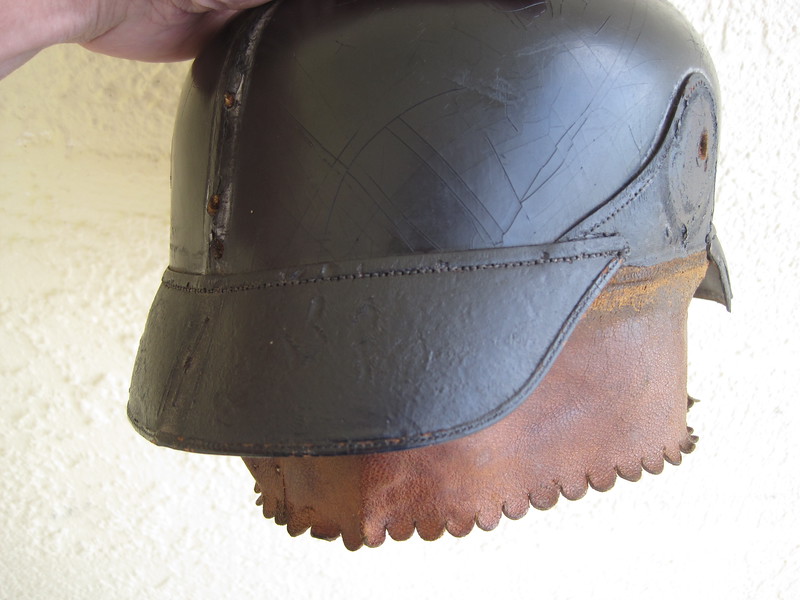2 Hanover Dragoner Regt Nr 16 just arrived here for a bit of work. Here are the "before restoration" pictures:
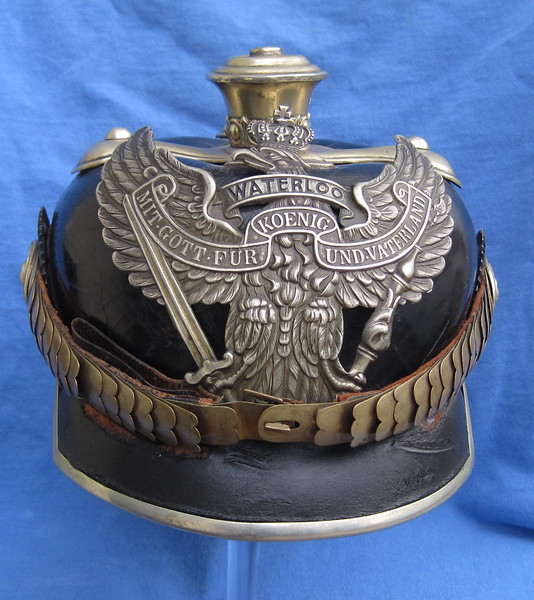
The spike is missing but Scout 17 who owns the helmet tells me there is one on the way from Germany.
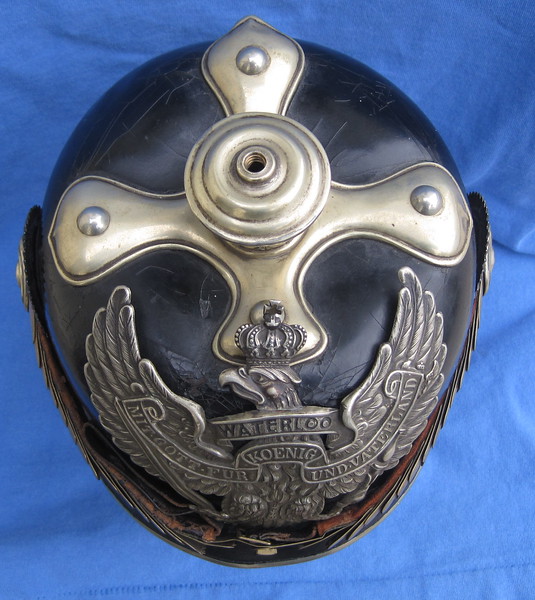
The typical Dragoner cruciform base which has sunk in a bit over time. There is no large Hessen style support disc nor the Bavarian cruciform support sometimes seen on their helmets.
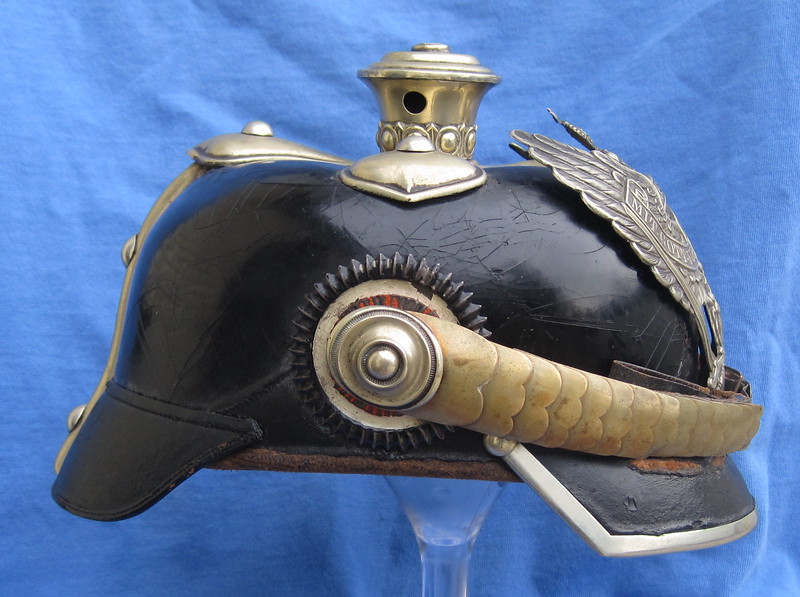
The helmet although private purchase/officer,
comes with OR's kokarden and wappen. This might indicate a OYV helmet.
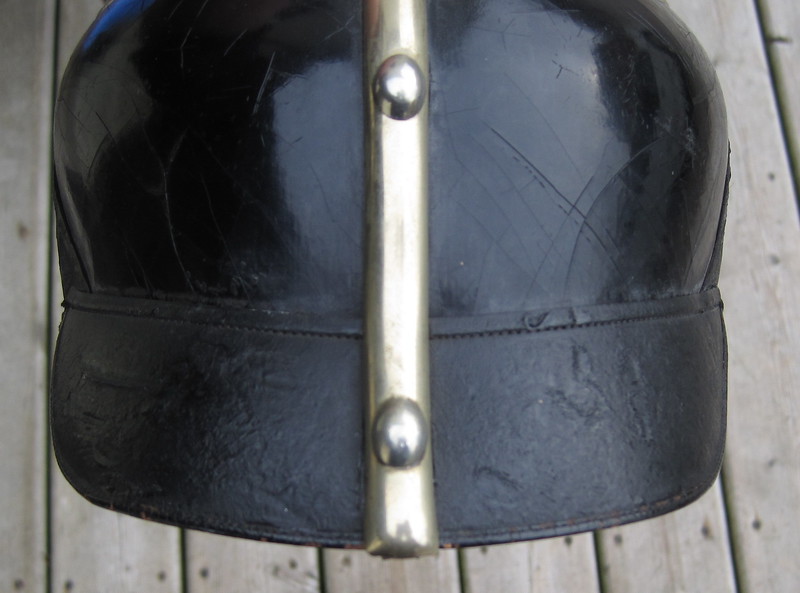
A shot of the rear showing the typical Dragoner spine with the extra dome split brads.
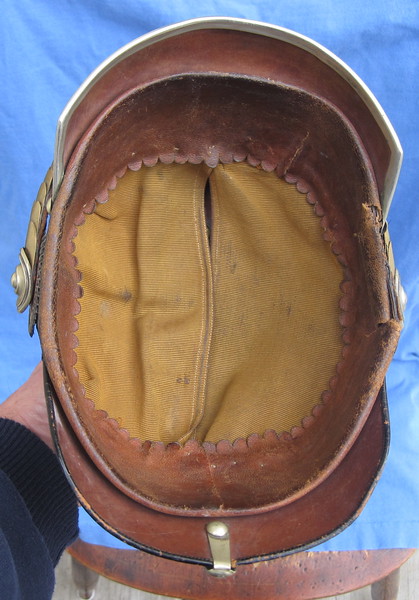
The interior showing the officer liner but the visors lack the usual red and green linen coverings. This is the second time I have seen this on a Dragoner helmet. I have a neusilber Baden Dragoner (My own) which is in pieces right now, it has the officer liner and wappen chin scales but no pearl ring. Kokarden despite the chin scales are OR M91's.
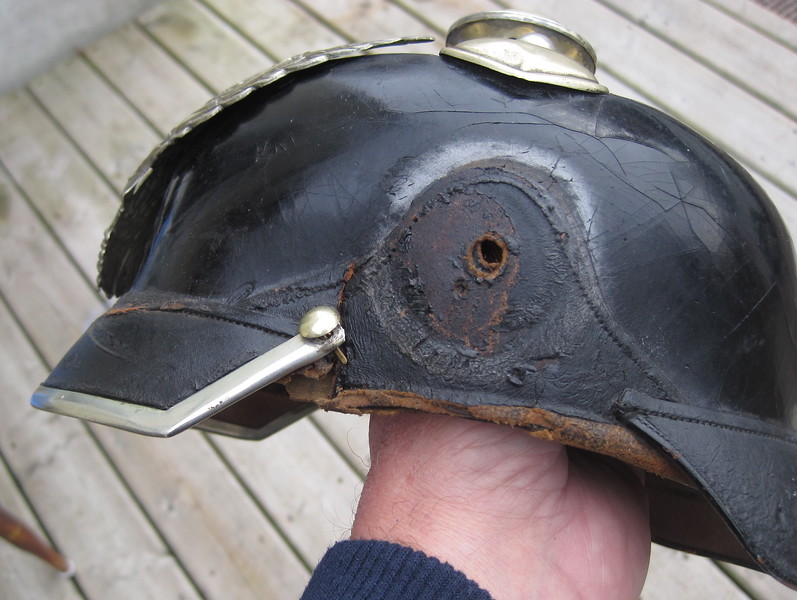
Here we see the main issue with this restoration...a split in both shell and left side reinforcement. The right reinforcement has also got to be restitched because the thread has rotted.
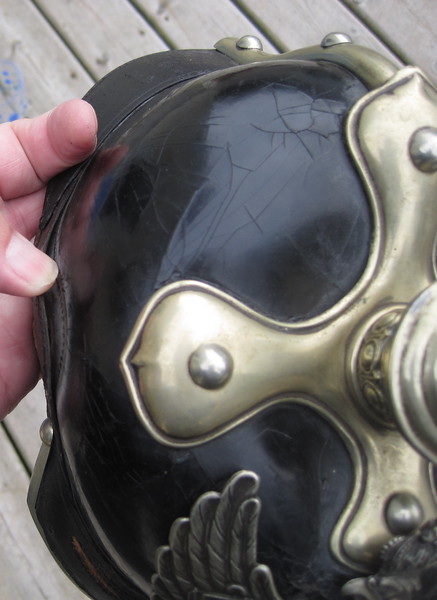
Other tasks...restitch rear visor, clean all fittings, smooth out marks in visors and stabilize tears in sweatband.
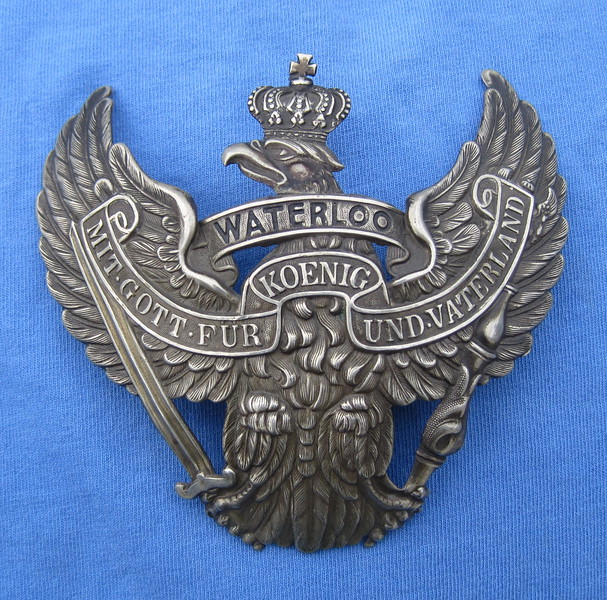
The wappen before cleaning today.
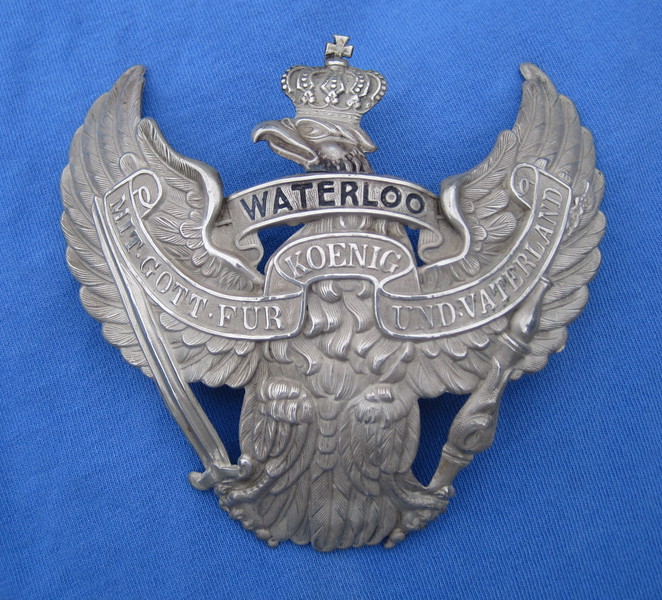
After cleaning, all that 100+ years of black grunge disappeared! To be continued.....

The spike is missing but Scout 17 who owns the helmet tells me there is one on the way from Germany.

The typical Dragoner cruciform base which has sunk in a bit over time. There is no large Hessen style support disc nor the Bavarian cruciform support sometimes seen on their helmets.

The helmet although private purchase/officer,
comes with OR's kokarden and wappen. This might indicate a OYV helmet.

A shot of the rear showing the typical Dragoner spine with the extra dome split brads.

The interior showing the officer liner but the visors lack the usual red and green linen coverings. This is the second time I have seen this on a Dragoner helmet. I have a neusilber Baden Dragoner (My own) which is in pieces right now, it has the officer liner and wappen chin scales but no pearl ring. Kokarden despite the chin scales are OR M91's.

Here we see the main issue with this restoration...a split in both shell and left side reinforcement. The right reinforcement has also got to be restitched because the thread has rotted.

Other tasks...restitch rear visor, clean all fittings, smooth out marks in visors and stabilize tears in sweatband.

The wappen before cleaning today.

After cleaning, all that 100+ years of black grunge disappeared! To be continued.....

